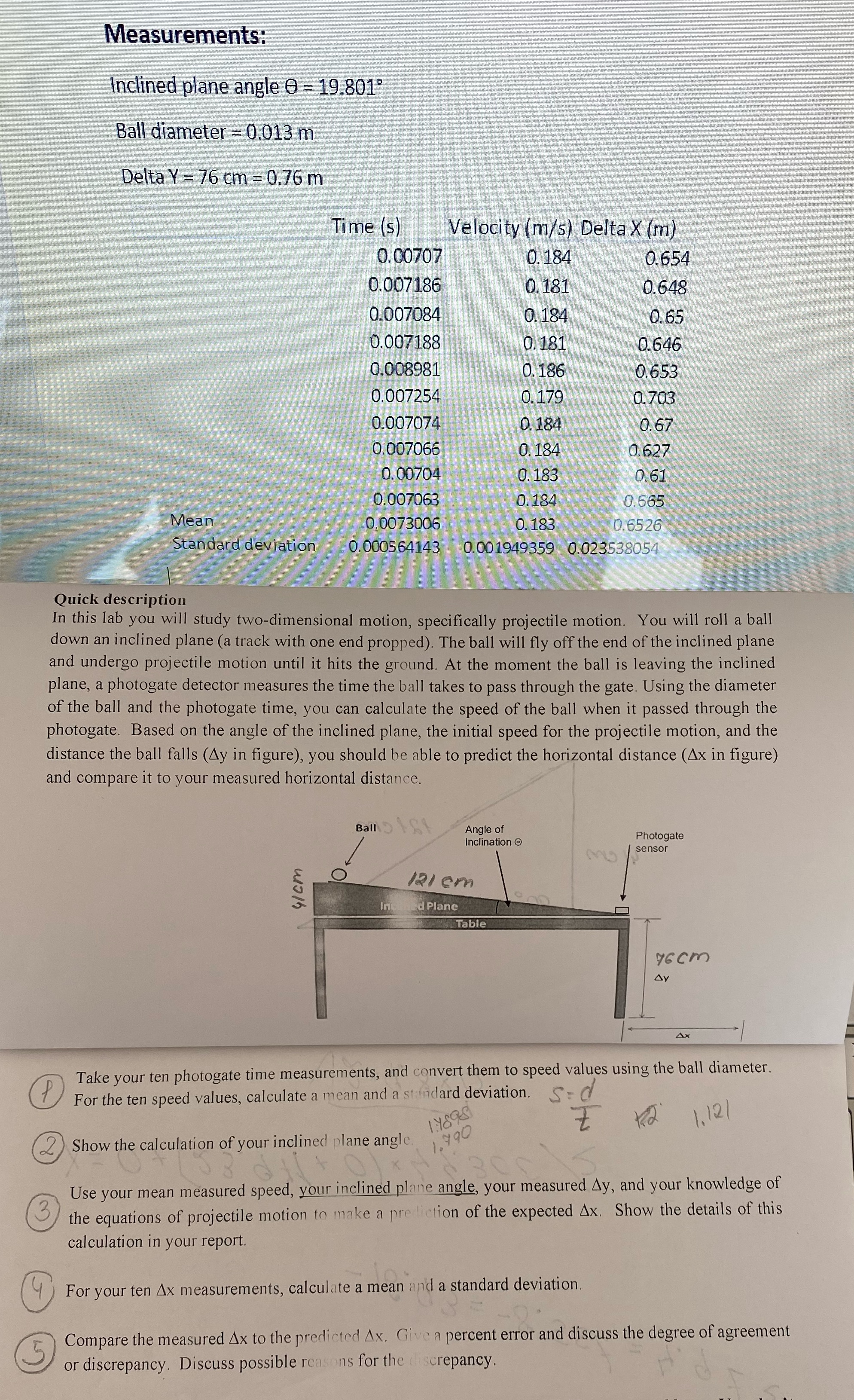Answered step by step
Verified Expert Solution
Question
1 Approved Answer
Measurements: Inclined plane angle 0 = 19.801' Ball diameter = 0.013 m Delta Y = 76 cm = 0.76 m Time (s) Velocity (m/s) Delta

Step by Step Solution
There are 3 Steps involved in it
Step: 1

Get Instant Access to Expert-Tailored Solutions
See step-by-step solutions with expert insights and AI powered tools for academic success
Step: 2

Step: 3

Ace Your Homework with AI
Get the answers you need in no time with our AI-driven, step-by-step assistance
Get Started


